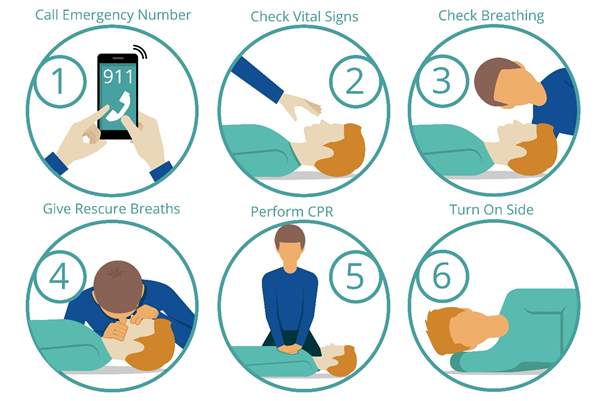Significance of Cardiopulmonary resuscitation for sudden cardiac arrest in India

Out of every 1-lakh people in India, approximately 4,280 die every year from sudden cardiac arrest and 60–151 per lakh people in the Unites States. It is estimated that 70 per cent to 90 percent of people who suffer from cardiac arrest outside the hospital die.
Cardiac arrest is a medical emergency due to break off heartbeats. It causes sudden deaths and needs immediate care for survival. In India, one of the major causes of low survival rates in cardiac arrest is lack of emergency service system. In India, only 10% patients are carried through ambulances and rest by relatives, police and bystanders. High quality CPR is a lifesaving support process given to patients before reaching to a medical facility.
Cardiopulmonary resuscitation in India
Cardiopulmonary resuscitation is a lifesaving technique which involves a series of actions thereby improving the survival of the patient. Compression-Only Life Support (COLS) is a very simple technique to perform cardiac resuscitation. The COLS need to be continued until any medical help arrives (ambulance service) by continuous breathing, compression and airway. It keeps the blood flowing through the body and brain while delivering oxygen to the bloodstream. Any common person who is not trained earlier can perform it. Effective CPR is necessary to perform early as every minute counts to a survival of a patient. A one-minute delay in resuscitation of the cardiac arrest victim drops the chance of survival to 10%. Nevertheless, if someone nearby performs CPR immediately, the chance of survival of victims can turn out to be almost 100%. CPR can save lives up to 20% by people aware about the use of CPR technique.
For the survival of patients, out of hospital cardiac arrest (OHCA), lack of CPR is found to be the one of the major causes of low survival rates i.e. 32% after OHCA. However, it is found that the overall survival to discharge rate is only 8%.
Lack of CPR training is the major reported reasons for non-performance of CPR by the bystanders. An estimated 80% of SCD events in India occurred at residence witnessed by bystanders and a considerable number of people feel helpless to act during the cardiac emergency. Thus, 95% of those who suffer sudden cardiac arrest die because of delay in defibrillation by 4 to 6 minutes.
Strategies to improve Cardiac Arrest survival
According to the Indian Resuscitation Council, United States serves 54% of its total cardiac cases, however India serves only 4.5% cases. Training of CPR is not only important but an inexpensive technique that can help in dealing the SCD. CPR training is an essential measure for healthcare staff, Healthcare providers mainly nurses plays an important role. Nursing students can perform excellent knowledge about the importance and purpose of CPR. Training of CPR to nursing staff could help in improving the survival of victims. Even now, it is important for all who witness the patient. Students at schools, undergraduate institutes, and employees in organized sector must be trained to perform CPR. We should recognize the importance of bystander CPR as a core component of the community response to OHCA.
A CPR training is a mandatory as approximately 100 compressions per minute is difficult to perform well by a layperson as they do not have enough knowledge and skills. Thus, another solution to save the victim is automated external defibrillator (AED), which is a small device that can restart a person’s heartbeat by giving electric shocks to the heart. Even a nonprofessional can perform this by operating it in any emergency condition. As a fact, immediate AED can increase the survival rates for victims of sudden cardiac arrest by more than 80%. In addition, around 66% percent of victims who received a shock from AED survived to hospital discharge in contrast to CPR with just 8–9% survival.







